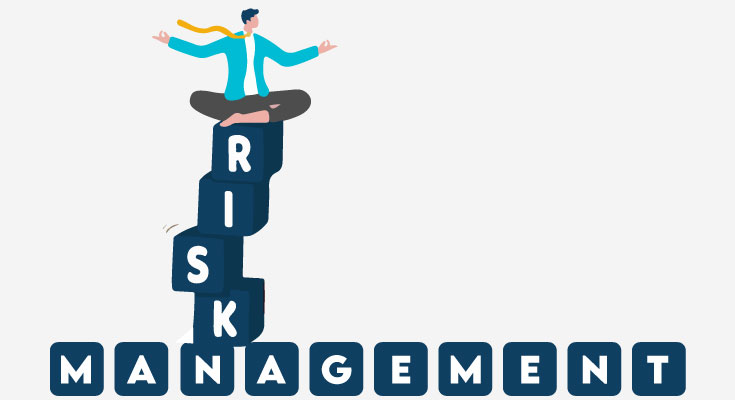Money laundering is a severely growing problem, and it’s not limited to any one country. The United Nations Office on Drugs and Crime (UNODC) that money laundering figures worldwide will exceed the global 2% of global GDP ($1.7 trillion).
Eurojust Report on Money Laundering, states that cases registered regarding money laundering have doubled within the last 6 months.
Anti-Money Laundering (AML) is a set of guidelines pertaining to financial institutions and other related industries. These guidelines are meant to prevent activities that support the financing of terrorism. Regulated businesses should not knowingly or unknowingly support these activities.
Risk-Based AML and Global Regulation
There are several anti-money laundering regulatory bodies that set up rules and regulations that local and international organizations have to follow. For companies to do business in a particular location, they have to comply with the rules and regulations set by the governing body.
The Financial Action Task Force is the global money laundering and terrorist financing regulatory body. The FATF has the responsibility to set international standards that aim to prevent illegal activities and the harm they cause to society.
FATF works with several governments and national regulatory bodies to achieve regulatory reforms. Regulations made by FATF cover more than 200 countries and jurisdictions.
The UK was the first one to propose a risk-based assessment for anti-money laundering. It was further adopted and improved by the FATS in 2012. this led to the development of proactive risk management.
Common AML Risk Factors
A proactive risk-based approach to AML can only be done when there is an accurate risk assessment. And there are 3 distinct areas of risk that regulated industries need to focus on during risk assessment.
- Individual Risks
Governments need to collect and maintain lists of high-risk individuals. These lists include known fraudsters, money launderers, terrorists, and red-flagged Politically Exposed Persons (PEPs).
These individuals are considered high-risk individuals because of their influence and access to a large number of funds. During customer onboarding, businesses need to identify high-risk individuals as it’s a KYC requirement.
- Location Based Risks
Governing bodies also compile assessments of risk that comes with geographical jurisdictions, flagging unsatisfactory money laundering and terrorist financing.
The geographical location determines the laws, regulations, technology, security, data privacy, and data accuracy of a business environment. To take a risk-based approach to AML, businesses need to take location-specific risks into consideration.
- Channel Risks
The way a product or service is taken to the market can also affect the risk level. Now that we’re living in an internet-based economy, sales of products and services that happen online always carry a hint of risk. Without robust KYC verification and ID verification process, there’s no way to eliminate the level of risks associated with online transactions.
How to Implement a Risk-Based Approach to AML?
Taking a risk-based approach to AML is similar to managing any other type of risk in your business. A risk-based approach to AML includes:
- Identifying Business Risks
To be able to take a proactive approach to AML, you first need to identify the risks. A business needs to review products, services, and portfolios, that contain common AML risk factors, such as:
- Customers – How much do you know about the type of customers for your service?
- Geography – What’s the exposure of the target markets to financial crime?
- Delivery channel – By what means the product will be delivered to the customers?
- Industry – How advanced are the regulations of your business’s industry?
- Monetary Value – Does your product and service has a high monetary value?
- Regulatory Controls – If the regulations in the country are advanced enough.
- Process Controls – How well can you document and follow your processes as a business?
- Analyzing Business Risks
Analyzing and assessing risks that a business has to face is crucial for a risk-based approach to AML. Using a table of risk factors for each product or service, a business can assign risks. Then the level of risk can be categorized as “low, medium, or high”.
The FATF has a guide that businesses can use to show how to rank risks using a simple matrix.
- Implement Policies that Eliminate Risks
Once the risk assessment is complete, businesses need to make policies and implement policies that help mitigate risks. These policies should make sure that the right level of scrutiny is applied to the right type of risks.
There should be an ideal balance between high scrutiny for high risks, and minimal friction for customers with low risks.
Technologies Involved in Anti-Money Laundering
To manage risk and maintain the risks of a business, there needs to be a solution that can cover every part of the business. There are a lot of AML technologies out there that can automate the risk-assessment process for new customers, and new transactions within seconds.
Technologies involved in anti-money laundering can be broken down into two categories:
- Know Your Customer
Know Your Customer (KYC) is the combination of customer due diligence and enhanced due diligence that regulated organizations comply with to make sure their customers are real people and not someone posing as someone else. If there’s a customer that poses a level of risk needs, to be monitored throughout the relationship with the business.
In an economy that’s moving towards digital solutions, new solutions that cater to online ID verification, and ID proofing are always coming up. These technologies can help businesses identify whether a customer is a genuine person or a criminal with stolen ID data.
- Transaction Monitoring
The process of monitoring a customer’s transactions, be they small or big is known as transaction monitoring. Transaction monitoring techs are designed to eliminate the risk of money laundering. These techs can monitor digital transactions across all business channels and look for suspicious behavior.
The cost of these solutions to the business is the only consideration businesses need to have before finalizing a technology.
Frequently Asked Questions
1. What is Anti-Money Laundering? Anti-money laundering is a set of rules and regulations outlining steps a business needs to take to manage or prevent the risks of money laundering. These regulations help businesses fight terrorism financing and other illegal activities. Businesses that work in under-regulated industries need to comply with these rules and regulations.
2. What is a risk-based approach to AML? AML regulations can be enhanced by taking a risk-based approach. The risk-based approach includes assessing the risk of a product and service’s exposure to the market, customers, channels, transactions, and other risk factors.
The assessed risk is categorized into low-risk, medium-risk, and high-risk categories. The potential impact on the business needs to be analyzed so businesses can come up with policies to prevent and manage these risks.
3. What is Know Your Customer (KYC)? Know Your Customer or KYC refers to the customer’s due diligence and enhanced due diligence process. Regulated companies have to make their customers go through the diligence process to verify if the customer is an actual individual or not.
The KYC process also includes continuous transaction monitoring, through which businesses can figure out suspicious activities.














